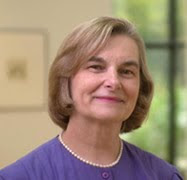I am already a day and a half behind in the story of this pilgrimage. I think I will try to post a couple of shorter pieces, trying not to get funky characters as I did in the title of the last post. I was trying to allude to the words of Robert Frost and a few extra characters appeared. The walls are everywhere here--some walling in, some walling out with all of the questions Frost asked or implied.
I ended the last post telling that we were on our way to visit the Jerusalem Holocaust Museum--a sprawling campus of buildings and grounds that call visitors to engage with the experience of the Holocaust not in general but in particular--in the faces and names and stories of those who suffered and died and those who caused the suffering and death. Their names and their stories are also told--in the black boxes that open so that the visitors can read who these human beings were . . . and wonder how they could do what they did.
As moving as the stories of the victims and as awful as the stories of their murderers are--so are the stories of the RIGHTEOUS AMONG THE NATIONS. That designation is given to those who risked their own lives for no gain--exemplifying the deepest commitment of human beings to each other, and giving to those who see their faces and their names some consolation and some hope. Human beings are capable of the best choices and the worst actions.
The museum space that we visited is too vast for a couple of hours, too complex to recount with any degree of completeness, and was too teeming with visitors to stop and think. Our docent/guide was highly articulate and quite persuasive in her presentation. Some of us longed for what was in the circumstances and impossible opportunity to dialogue and to just experience spaces and moments. The four endings of the story the museum tries to tell were abbreviated. Only one of our group took a detour and sat for a few minutes in the darkened room with music playing softly--the third ending our guide only referenced between the incredible second ending where names and faces are memorialized in photographs and binders circling the space from the vaulted ceiling to the pit in the center below that reflects those same faces and names back. Empty shelves are left empty for the names and stories that have not/will not be recovered.
Perhaps the most striking image for me came at the end, walking out of the darkness into the vaulted space in which the light floods in and the panorama of the land that is Jerusalem is framed for the future. The guide spoke of a quotation from a young girl's diary--she did not survive, but hoped that somehow the victims would be remembered not by monuments but by the good deeds of people who learn the story of what happened.
Our Palestinian guide, Husam, told us a very moving story once we were back on the bus. During her presentation, the docent stressed repeatedly how there was no effort spared to take away everything from the victims of the Holocaust--their homes, their clothes, their families, their stories and their names. Each was given a number and with that number met his/her death and in the disposal of remains an eradication of any indication that the person ever existed.
Husam told us that following the tour, he identified himself to the docent as a Palestinian, who had been imprisoned by the Jews for six months. The first thing that his captors did was to take away his name and gave him a number. That was how he was known and that was what he was required to be responsive to.
The docent would not talk with him about this and walked away. It is a moment and a story that has reveberated in our journey here.
Subscribe to:
Post Comments (Atom)







Yad Vashem is an incredible experience, and I am sure it has changed greatly since I was there so long ago. Thanks for sharing.
ReplyDelete